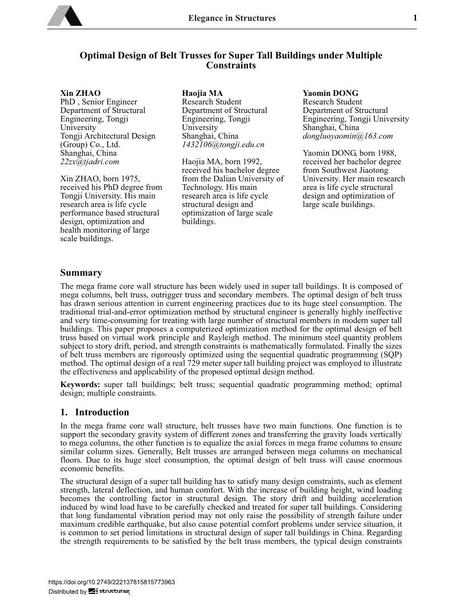Optimal Design of Belt Trusses for Super Tall Buildings under Multiple Constraints

|
|
|||||||||||
Détails bibliographiques
| Auteur(s): |
Xin Zhao
HaoJia Ma Yaomin Dong |
||||
|---|---|---|---|---|---|
| Médium: | papier de conférence | ||||
| Langue(s): | anglais | ||||
| Conférence: | IABSE Conference: Elegance in structures, Nara, Japan, 13-15 May 2015 | ||||
| Publié dans: | IABSE Conference Nara 2015 | ||||
|
|||||
| Page(s): | 66-67 | ||||
| Nombre total de pages (du PDF): | 8 | ||||
| Année: | 2015 | ||||
| DOI: | 10.2749/222137815815773963 | ||||
| Abstrait: |
The mega frame core wall structure has been widely used in super tall buildings. lt is composed of mega columns, belt truss, outrigger truss and secondary members. The optimal design of belt truss has drawn serious attention in current engineering practices due to its huge steel consumption. The traditional trial-and-error optimization method by structural engineer is generally highly ineffective and very time-consuming for treating with large number of structural members in modern super tall buildings. This paper proposes a computerized optimization method for the optimal design of belt truss based on virtual work principle and Rayleigh method. The minimum steel quantity problem subject to story drift, period, and strength constraints is mathematically formulated. Finally the sizes of belt truss members are rigorously optimized using the sequential quadratic programming (SQP) method. The optimal design of a real 729 meter super tall building project was employed to illustrate the effectiveness and applicability of the proposed optimal design method. |
||||
